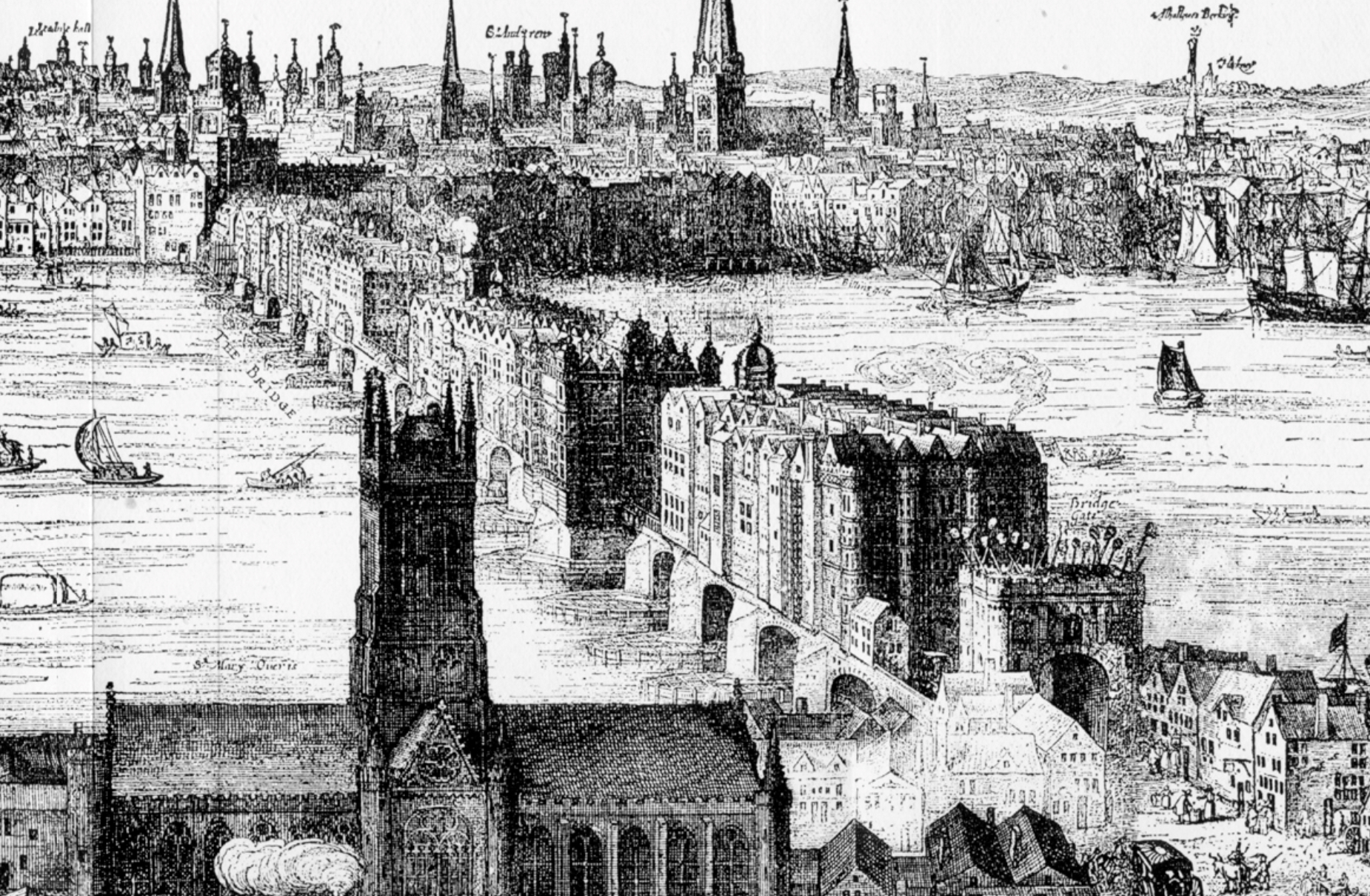Even when away on holiday we can't help noticing connections to the Lost City of London! We've just come back from a wonderful week in Florence and thought we'd show you a couple of interesting parallels between what we saw in today's Florence and the London of Medieval and Roman times. This blog post looks at a key Medieval parallel; part 2 will cover a Roman one.
The only bridge in Florence to survive the second World War is the Ponte Vecchio - 'Old Bridge' in Italian. It dates from 1345 (although there had been previous bridges in that location since at least 996). It was a real thrill to see (albeit in minature) something very similar to what (Old) London Bridge - demolished in 1831 - would have looked like in the Medieval period, with rows of buildings on either side.
.jpg) |
| The Ponte Vecchio, Florence (April 2013) |
 |
London Bridge (1616) by Claes Van Visscher
|
 |
| Ponte Vecchio, from 'Golden View' on the South Bank |
 |
| Early morning on the Ponte Vecchio |
 |
| Jewellry shops on the Ponte Vecchio |
In the case of the Ponte Vecchio, the buildings on either side of the narrow thoroughfare - thronging with tourists except for first thing in the morning - are today exclusively gold jewellery shops; when built the shops on the bridge had at first been occupied by butchers - who made use of the river below to dispose of their more unpleasant waste products. The butchers were eventually ousted by the powerful Medicis who disliked the smell.
The Medici family also built a 'secret' walkway across the upper part of the bridge for their own private use, known as the Vasari Corridor (the upper storey is visible in the photograph below), connecting the Uffizi on the north bank to the Pitti Palace on the south bank.
 |
| The Vasari Corridor |
Ponte Vecchio is a small bridge with only three arches, whereas London Bridge had nineteen! The Thames back then was a lot wider than either the present day Thames, or the Arno River in Florence. The buildings on London Bridge - 138 shops by 1358 - were a mixture of all sorts, and there were public latrines discharging into the river below, and heads on spikes on the south end.
The Ponte Vecchio was built just before the major outbreak of The Plague - known as the Black Death, which killed between a third and a half of Florence's total population in 1348, a similar proportion to the death toll when the Plague reached London later the same year. Many of the plague burials in London were in the Charter House - the site of which forms part of the Cross Rail archaeological excavation by the Museum of London. This location is on the route of our Wednesday morning walk - Historic Smithfield, Clerkenwell and Holborn.
PLEASE NOTE - Due to the security measures relating to the funeral of Lady Thatcher on Wednesday 17th April, we will not be able to offer either of our usual Wednesday walks on that date - back to normal on 24th April . (The Thursday and Friday walks will be available as usual on 18th and 19th April)
.jpg)





Postscript. It turns out that there are just a few bits of the Old London Bridge (demolished in 1831) that you can still see today in London. Three out of four alcoves that survive from the Old Bridge are in London - two in Victoria Park in East London, and one in the grounds of Guy's Hospital in Southwark (featured on our Historic Southwark Thursday pm walk). These pedestrian alcoves, or niches, in portland stone were among a total of 14 added to the bridge in 1757 to provide passing places on the busy bridge. The alcove at Guy's features the later addition of a statue of Keats (who was a medical student).
ReplyDeleteThere's also a plaque - marking the position of the bridgehead at St Magnus the Martyr - and (although we haven't yet seen it ourselves) two actual stones from the Medieval bridge, discovered in 1921 just across the road and preserved today in the churchyard of the same church.
See also http://greatwen.com/2011/04/14/secret-london-finding-bits-of-lost-london-bridge/